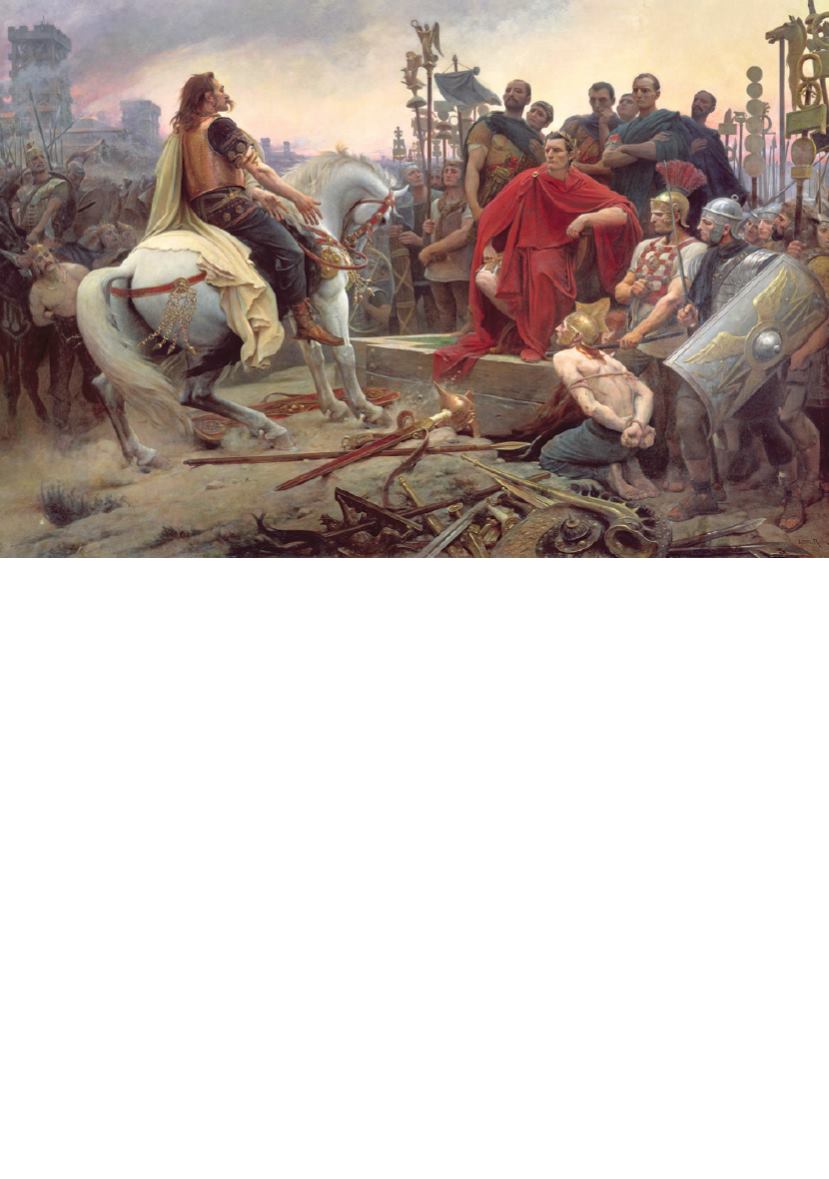
44
governor of a province in southern Gaul. His main goal there was to
gain access to the army that each provincial governor routinely had
at his disposal. No sooner had he taken command of his troops than
he marched them off to conquer the still wild lands of central and
northern Gaul. After several years of relentless campaigning, by 51
BCE Caesar had defeated dozens of Celtic and Germanic tribes. He
had “fought pitched battles at various times with three million men,”
Plutarch reported, “of whom he destroyed one million in actual fight-
ing and took another million prisoners.”
26
Although these figures are undoubtedly exaggerated, Caesar
was
totally victorious. To his delight, he had become both a war hero and
the strongest, most feared leader in the Roman realm. By that time,
Crassus had been killed in a military campaign in the Middle East.
Meanwhile, Pompey had become the tool of some senators who had
turned him against Caesar. With the triumvirate dismantled, Caesar
Julius Caesar (in the red cloak) receives the surrender of his chief Gallic
adversary, Vercingetorix. After conquering central and northern Gaul,
Caesar crossed the Rubicon River into Italy at the head of his army,
igniting a bloody Roman civil war.


